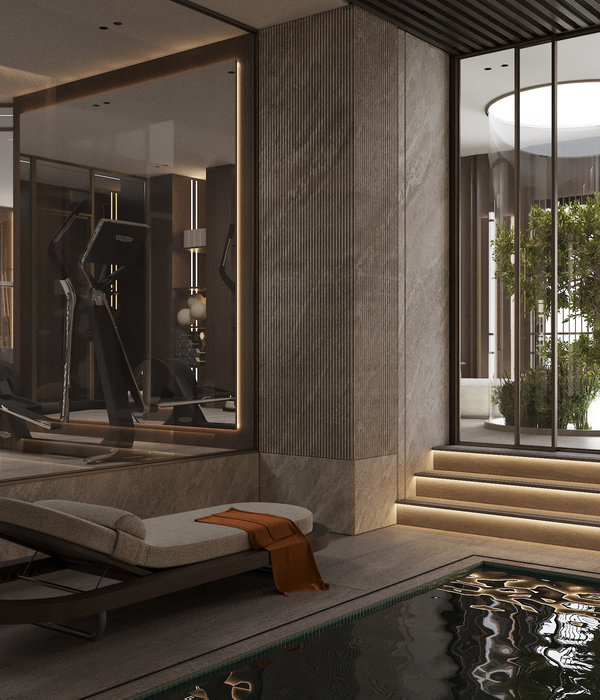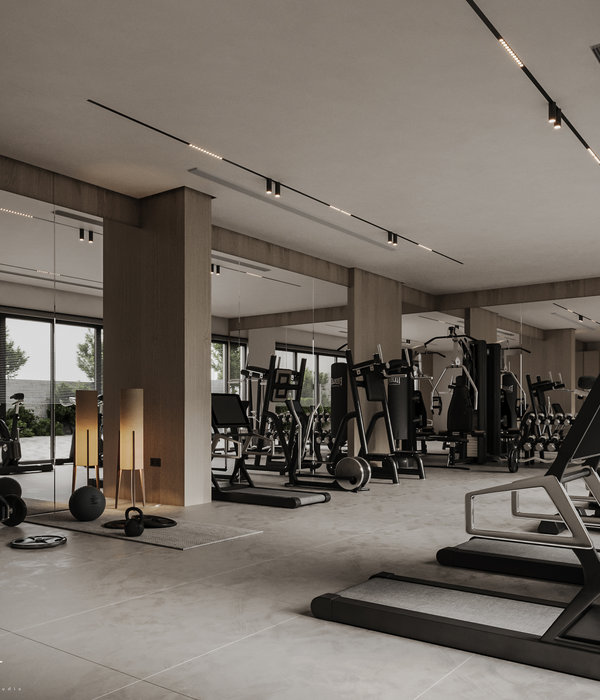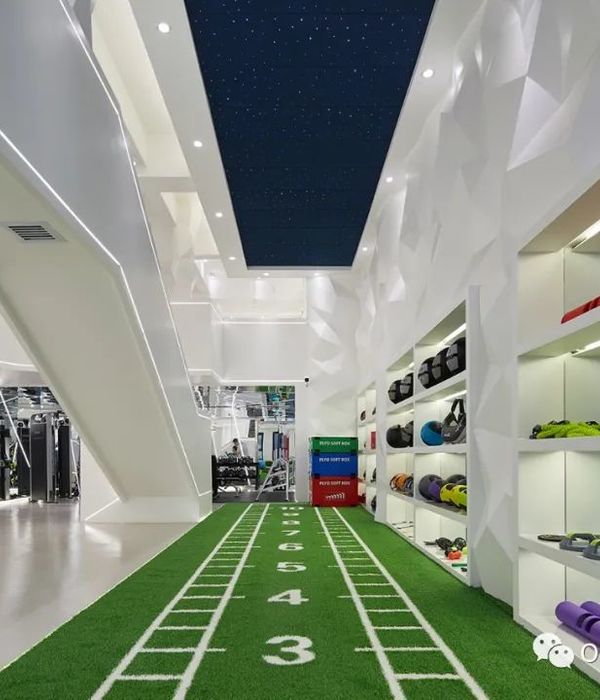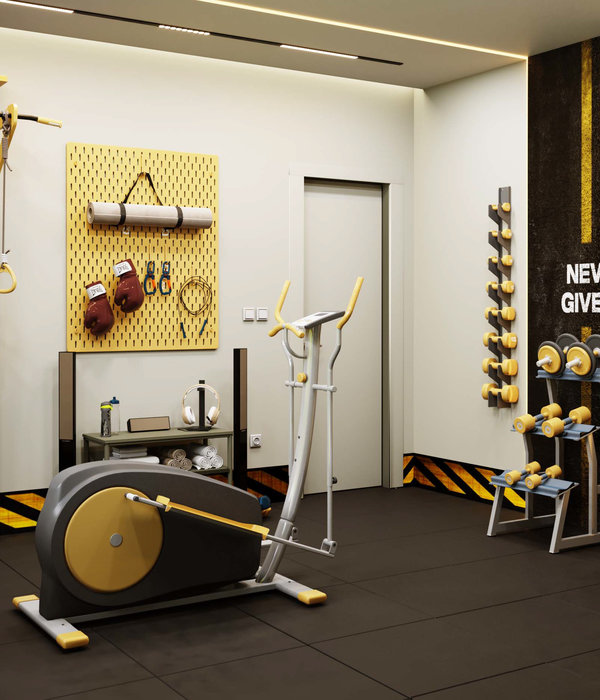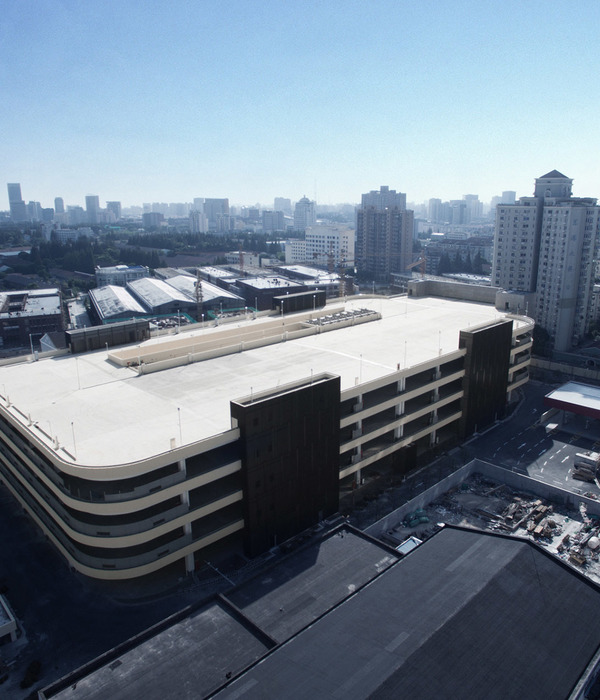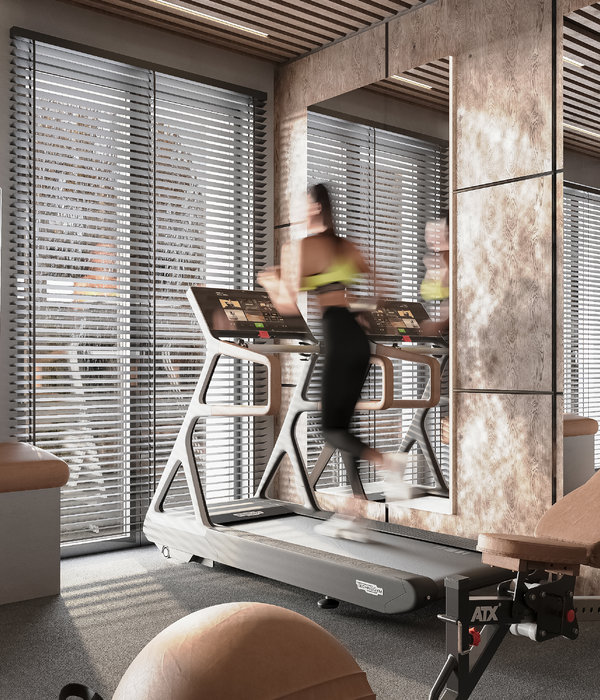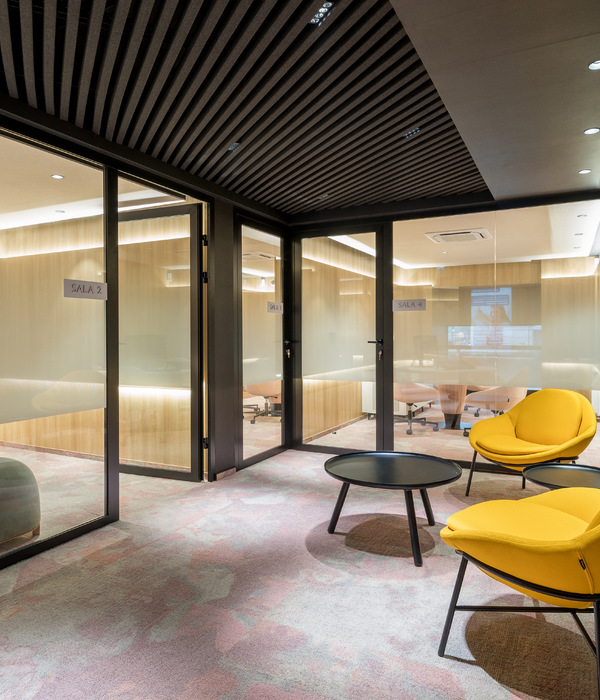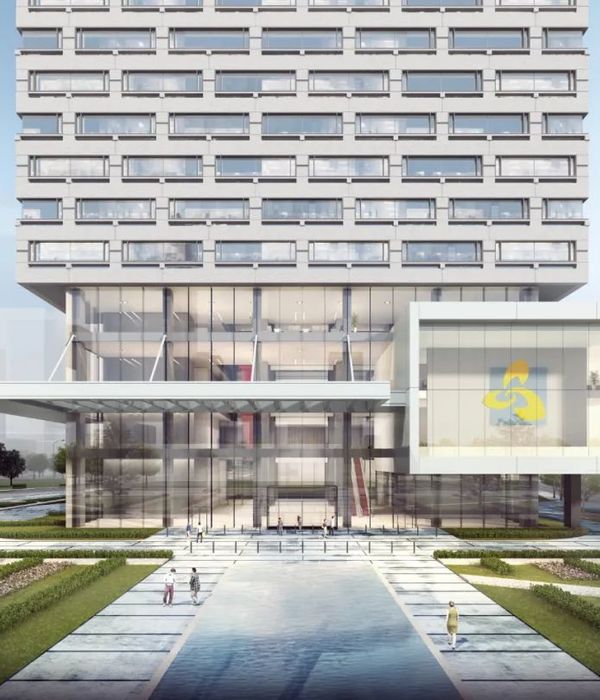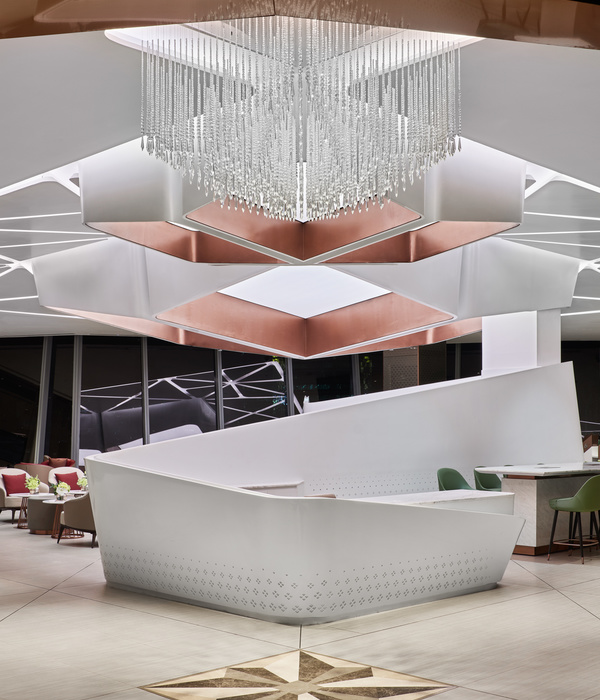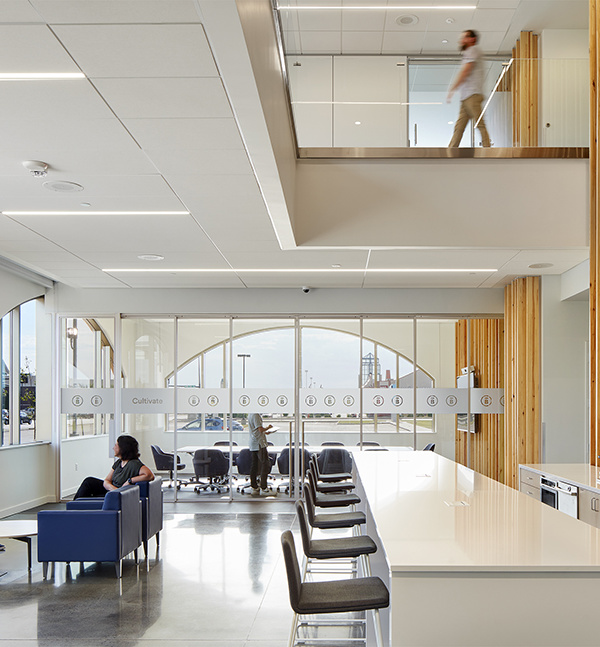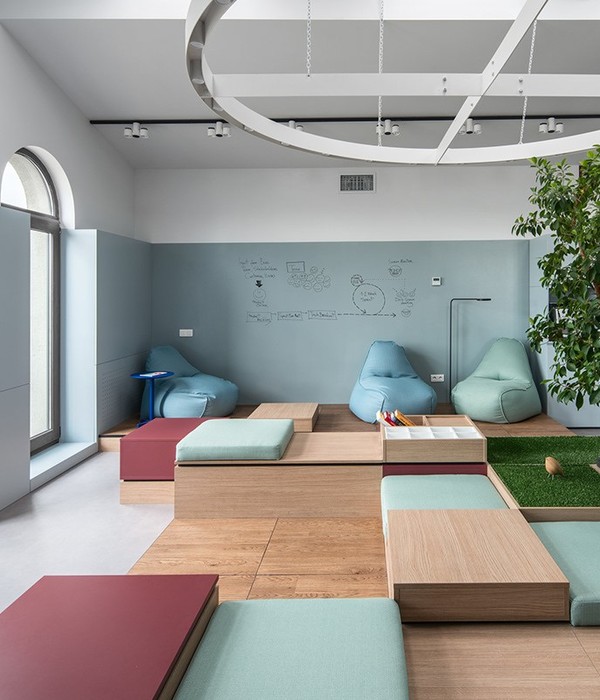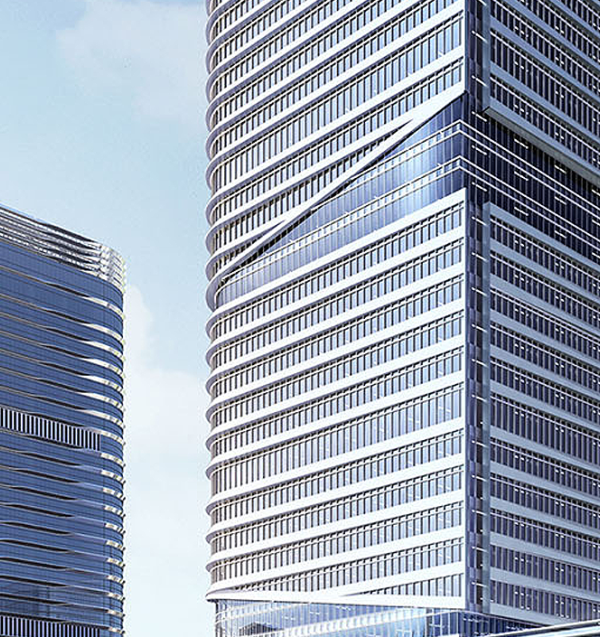Shiziling Ideal Village / ARCPLUS · Free Studio
Architects:ARCPLUS · Free Studio
Area:7601m²
Year:2019
Photographs:Kun Zhang
Architectural Design:Ye Wang, Jing Chen, Yutong Sun
Architect In Charge:Yue Shen
Engineering:Chunlei Yin, Yitong Chen, Dingli Dai, Hong Hu
Structural Design:Wei Li, Weiguo Shen
Client:Zhujialin Rural Complex Headquarters, Yinan County
Interior And Landscape:Shanghai Times Architectural Design Institute Co., Ltd.
Planning And Operation:Xiangban Tourism Culture Development Co.Ltd
Interior Design:Shanghai Times Architectural Design Institute Co., Ltd.
Landscape Design:Shanghai Times Architectural Design Institute Co., Ltd.
City:Linyi
Country:China
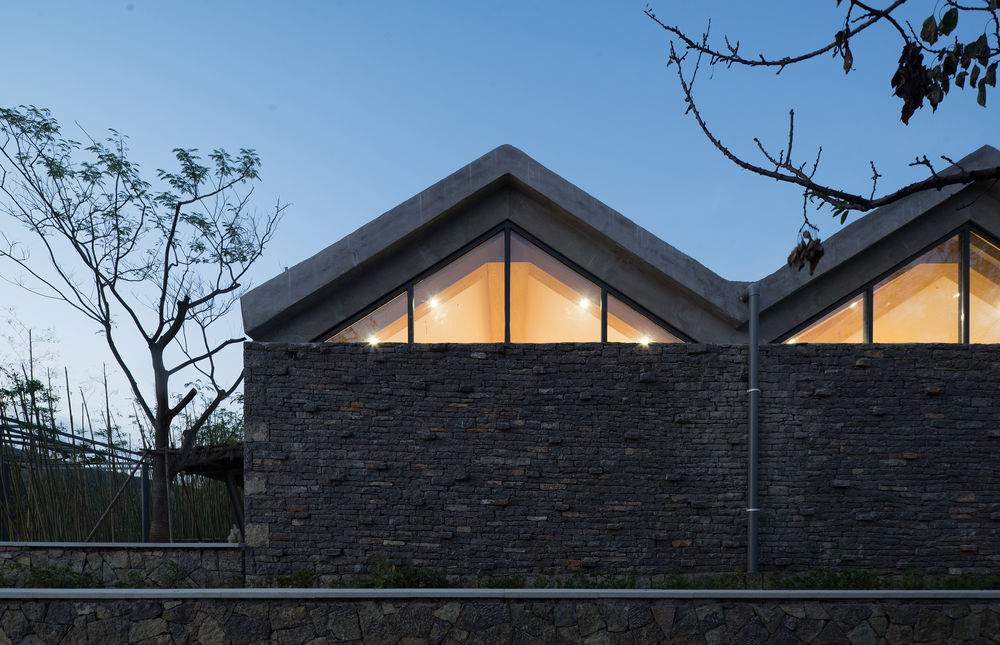
Text description provided by the architects. BackgroundShiziling Ideal Village, located in Yinan County, Shandong Province, is an important node of Zhujialin National Pastoral Complex. Zhujialin Pastoral Complex carried out rural revitalization practice with the model of “cultural travel”. Through four years, it has stood out from the national pastoral complex in the country from the national pilot to the national demonstration. As the core area of Zhujialin, Shiziling Ideal Village explores local culture and extracts local elements based on the rural form. Starting from the locality, designers rebuild the county through the aspects of building renewal, space activation, economic industry revival and cultural tourism industry development, which to make Shiziling Ideal Village the represent of cultural tourism in Qilu area.
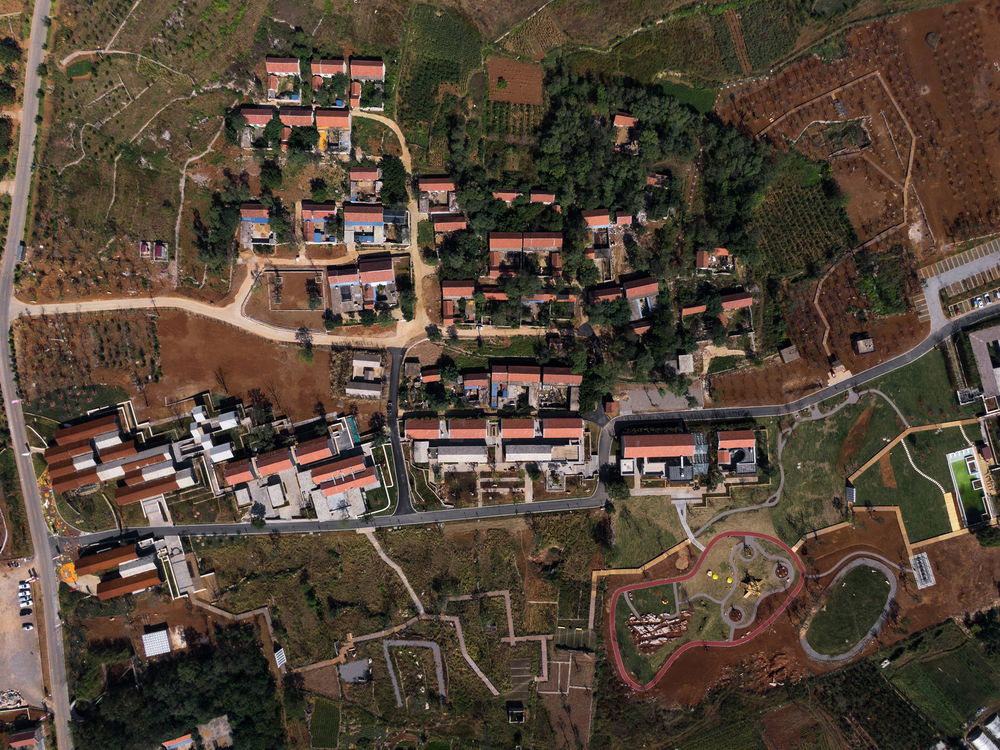
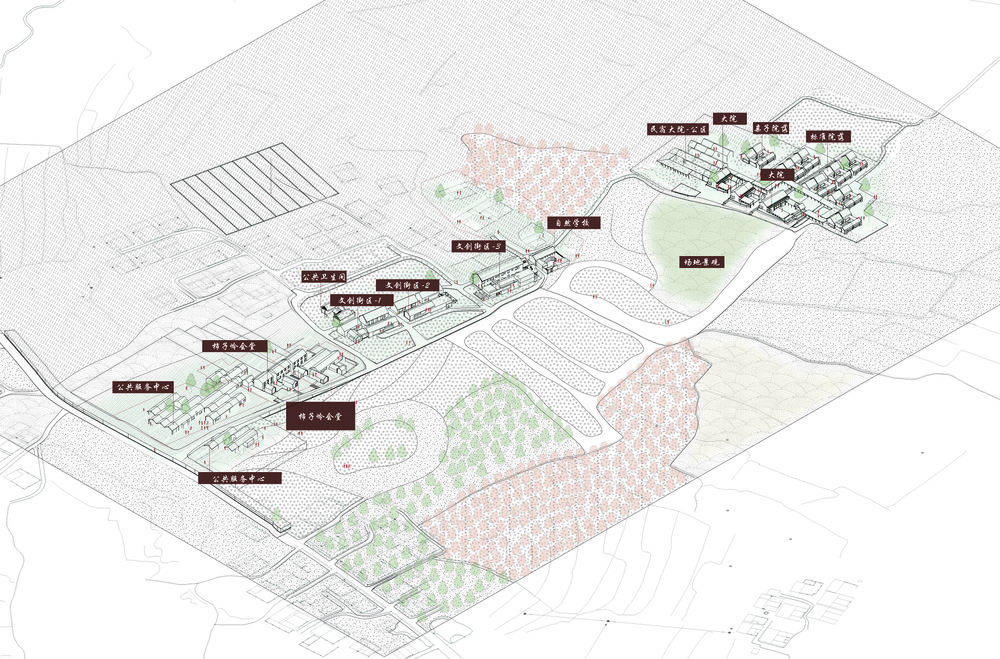
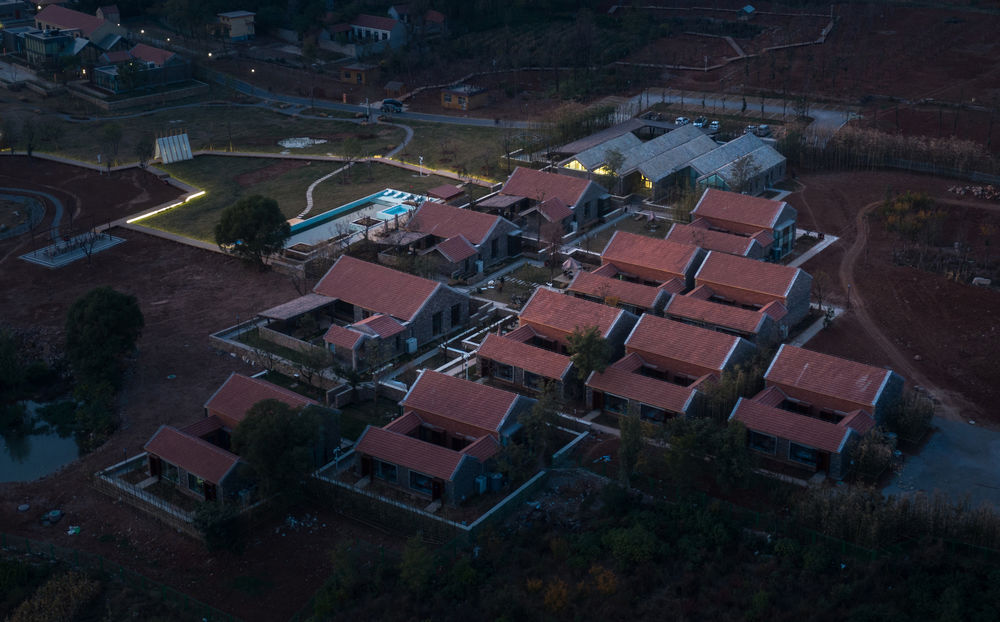
The total scale of the project is about 7,600 square meters. On the north side of the village road are scattered residential houses, and on the south is mount of fields. To the east to the end, the village courtyards gather to form a group. The countryside and nature are intertwined here, and the space between the original village and the earth contains the possibility of more stories. We started from the aspects of location, transportation, settlement texture, etc., and set the format of Shiziling Ideal Village from east to west as a homestay yard, cultural and creative block and public service center. The function is from private to public, and the space is from closed to open. , The design intervention gradually increased.

Homestay CourtyardThe "yard" is a typical spatial form of local houses, and the original texture of the village settlements is also a combination of large courtyards. Dozens of homestay yards based on the flat form of the residential courtyard, are located on the original homestead of the site. They restore the traditional texture of the residential houses, inherit the regional tradition in terms of space, shape and material, and form a relatively independent courtyard space.
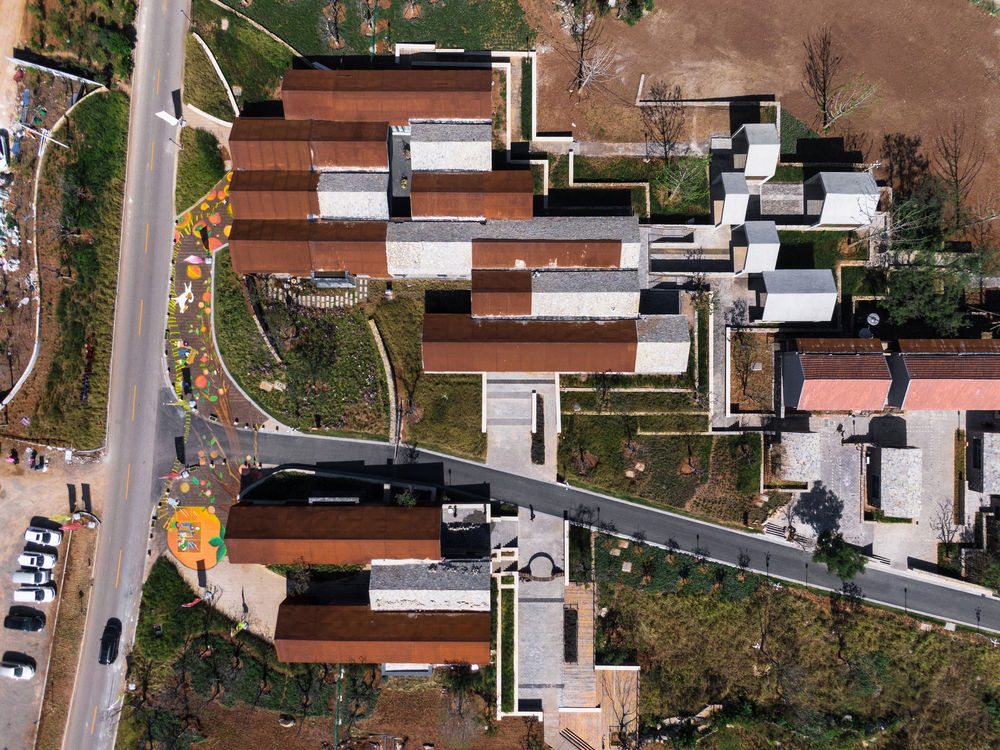
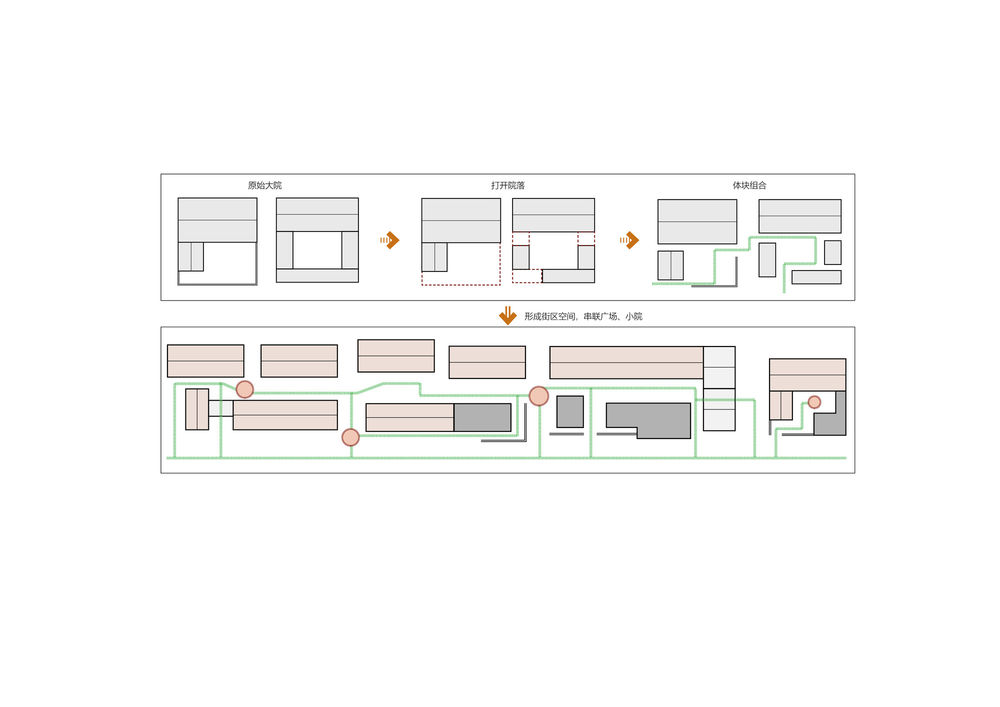
The homestay courtyards include the large courtyard homestay, the standard courtyard homestay and the parent-child courtyard homestay, providing indoor and outdoor living places for business, leisure and parent-child interaction. In order to meet the living needs of modern people, a public building is set on the north side of the homestead and near the village road. It mainly provides reception and catering services for the homestay. A common kitchen, shared living room and courtyard are also implanted in the homestay courtyard. Living spaces such as tea sheds endow traditional living spaces with modern social attributes. Here, you experience modern life in a rural environment. In a traditional residential house, the courtyards space has been transformed into places for friends, families, and children to interact and gather and entertain. The collision of the courtyard space with the living conditions of different residents gives each courtyard a personality and spirit.
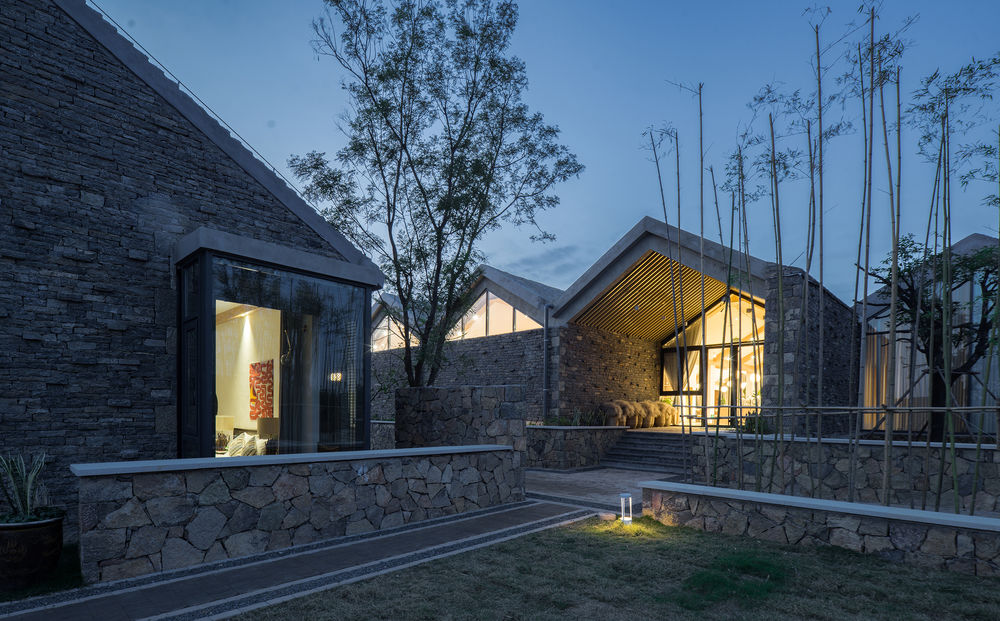
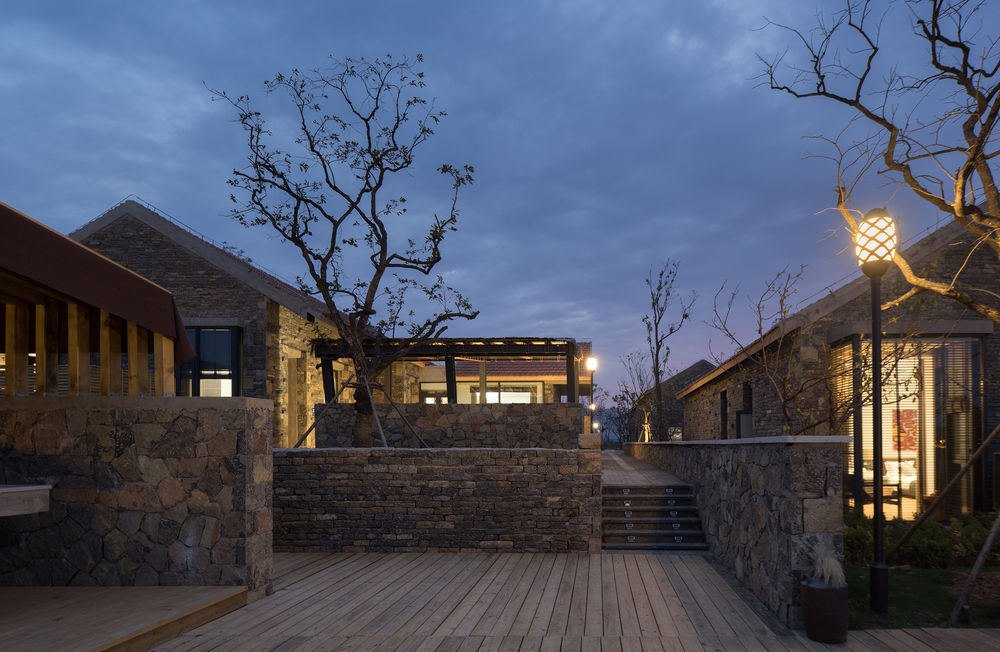
The homestay courtyard integrates the function of modern lifestyle. But during the construction, designers follow the practice of traditional residential houses. The public area adopts the folded roof evolved from the traditional slope roof to cover the public activity space, so as to express the publicity of the building in the community. At the same time, in order to emphasize the traditional nature of the group building, the public area building uses stone as the facade and the main material of the roof. The entrance is guided by the common thatched shed, and the building seems to break out of the earth. The courtyard of the homestay is dominated by ramparts and red tiles, fully expressing the respect and inheritance of the local style. The lane between the courtyards maintain the scale of traditional villages, and large and small neighborhood spaces are connected in series in pedestrian lanes to become public places in the settlement. Starting from the public area, along the winding path, you can shuttle between the courtyard, the site landscape and the surrounding fields, and feel the rich spatial level of the courtyard area.
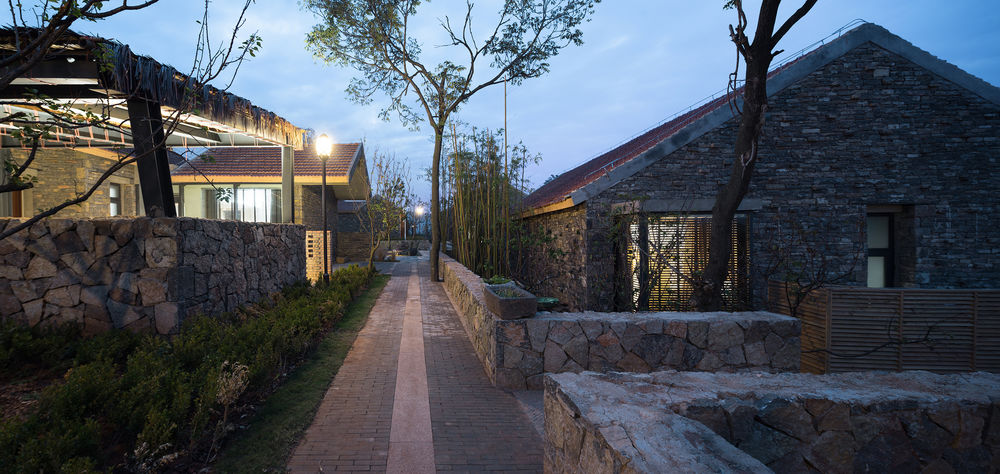
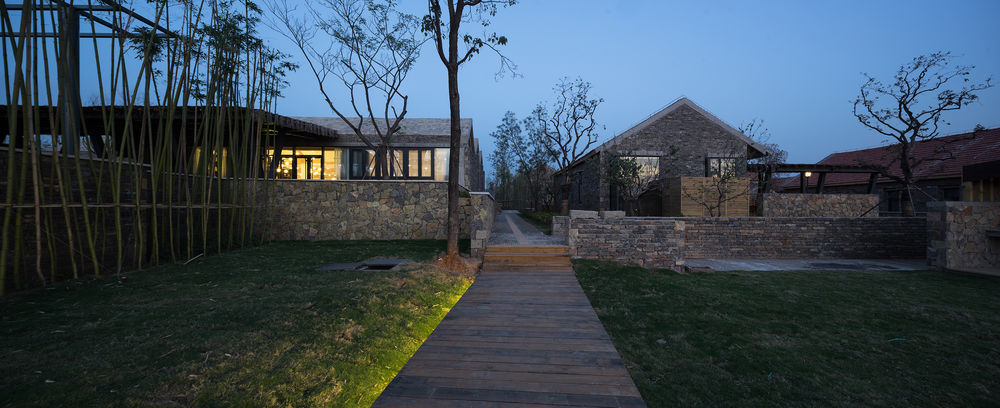
The BlockThe group in the middle of the village is in front of the residences, facing the road and the field, the linear texture implies guidance. We use this space orientation to enlarge and lengthen the neighborhood space. Based on the original courtyard texture, we open the surrounding walls and connect the inner courtyards. Multiple dismantled courtyards form a block-like spatial sequence.
The courtyard form is opened and combined, and the spatial form of "front yard and back house" is transformed into a series of inner streets, squares, and semi-enclosed small courtyards, to create an open street scene atmosphere. On the south side of the road, the site was sorted and slightly transformed, and planks, tents, unpowered children's amusement parks and other activities were arranged to restore the original fun of rural fields. The landscape of the earth becomes an extension of the block-travel experience and a natural transition between the courtyard and the block.

The whole village block is mainly made of stone, with elements such as wood and glass. It is emphasized in the local opening and display space, which enhances the fun of the block experience.
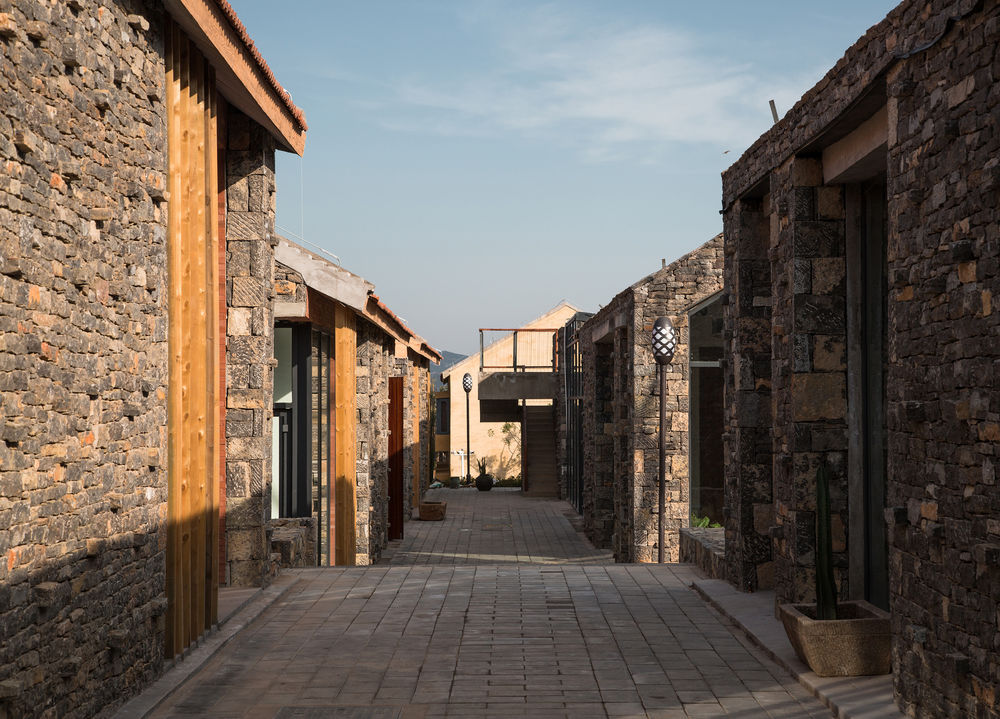
The block format covers multiple aspects of agro-creative, rural-creative, cultural and creative experiences, including cultural and creative shops, handicraft workshops, village fairs, restaurants, and nature schools. Here, the local creative crops, folklore, and craftsmanship are used for secondary creativity, sent to the classroom for learning, served on the desktop experience, put in the window display, and taken away with imported bags, providing new employment opportunities for the villagers and giving tourists the locality experience learning, make local characteristics be inherited and carried forward, so that rural industries can develop in an open attitude.

Public Service CenterTo the west of the village, facing the "gateway" of the road, is the public service center of Shiziling Village. As the starting point and gathering place of the village, the public service center needs to provide residents with space for entertainment, communication, and learning, and it has strong public attributes. In this group of buildings, in order to balance publicity and regionality, the design puts the local native architectural language in the context of contemporary architecture and repeats it, blending regional culture and the spirit of modern architectural sites, and expressing it in terms of symbols, materials, construction, etc. , To give space narrative to the building.

We extracted the original slope roof elements of the village as the basis for the formation of the village service center. Taking the double-sloped roof as a motif, it can be freely and organically grown into a complete, continuous and dynamic folding surface form by copying, shifting and breaking on the plane. Under this roof, not only can the functional assumption of a large space be realized, but also an indoor space effect of continuous slopes is formed, which completes the consistency of the building from outside to inside.
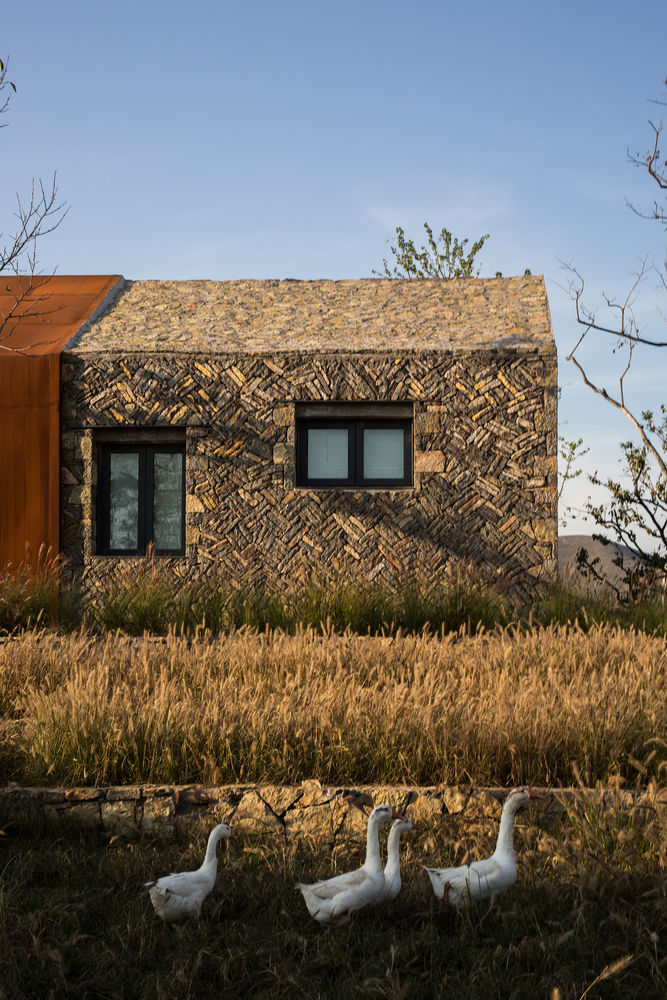
The west wall of the building faces the road and is the main entrance to the rural service center. The expression of the roof form on the gable wall has a strong symbolic sense due to the repetition of the motif. We extended and strengthened this symbolic language to form the main entrance gray space. On the east side of the building, using the same method, the interior space is penetrated into the field through the form of a structure. The continuation of the roof form and the opening of the enclosed interface will create a special space between the building and the environment Shelter and natural surroundings.
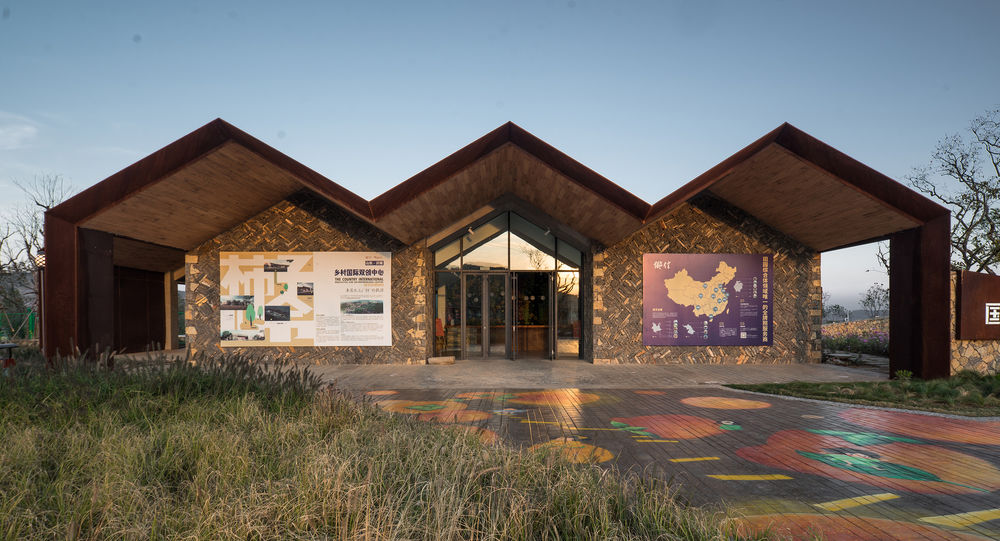
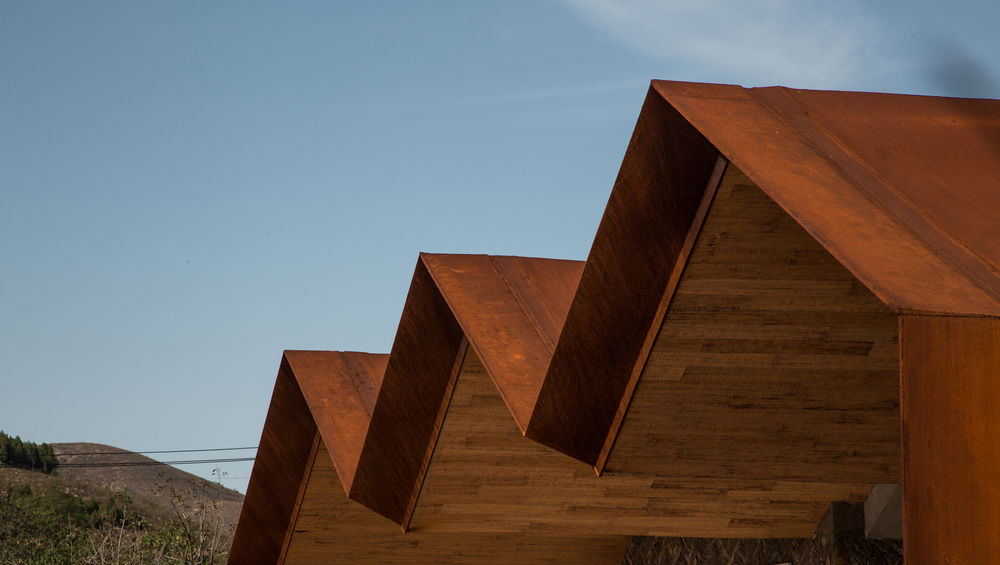
The main body of the building uses block stones and weathering steel plates as the main facade materials. The block stone is an expression of regional materials. With the local construction method, the natural texture and texture are presented on the facade. The dark red weather-resistant steel plate is used here to express the original red of the village with modern architectural techniques. The gray or yellow block stones and the deep red weathering steel plate show different textures and roughness, forming rich facade texture and color levels. In addition to the main building, the space structure that continues to the east of the site uses a classic combination of stone, clear concrete and wood. The off-white fair-faced concrete reveals a refreshing simplicity in the site. The log grille is used as the screen between the concrete roof and the stone low wall. Feel the "emptiness" of the endless fields, the light and shadow changes and space feeling brought by the interface transition between the three are fascinating.
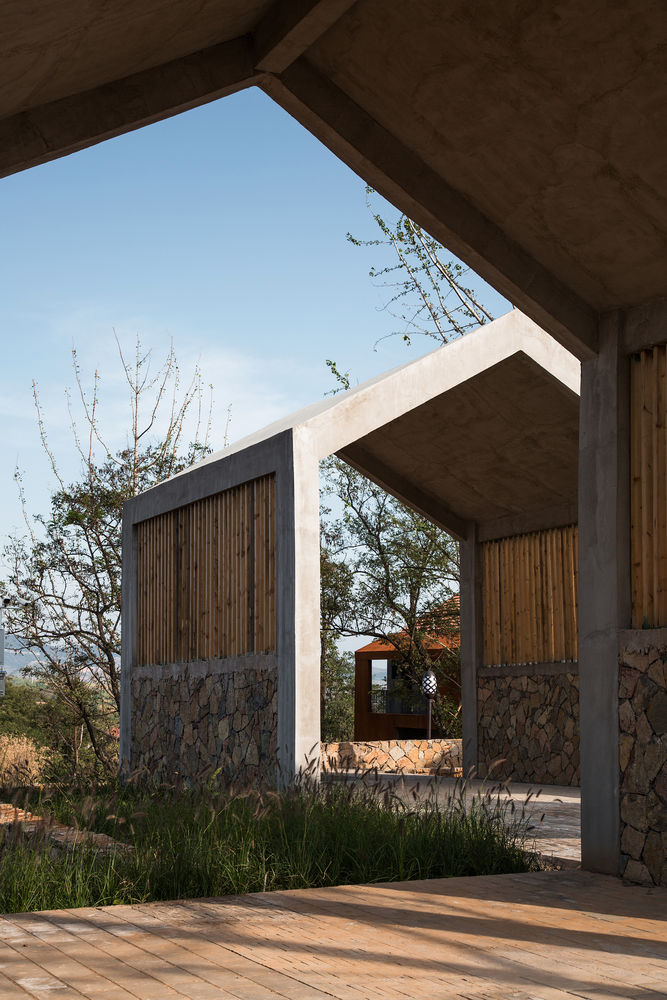
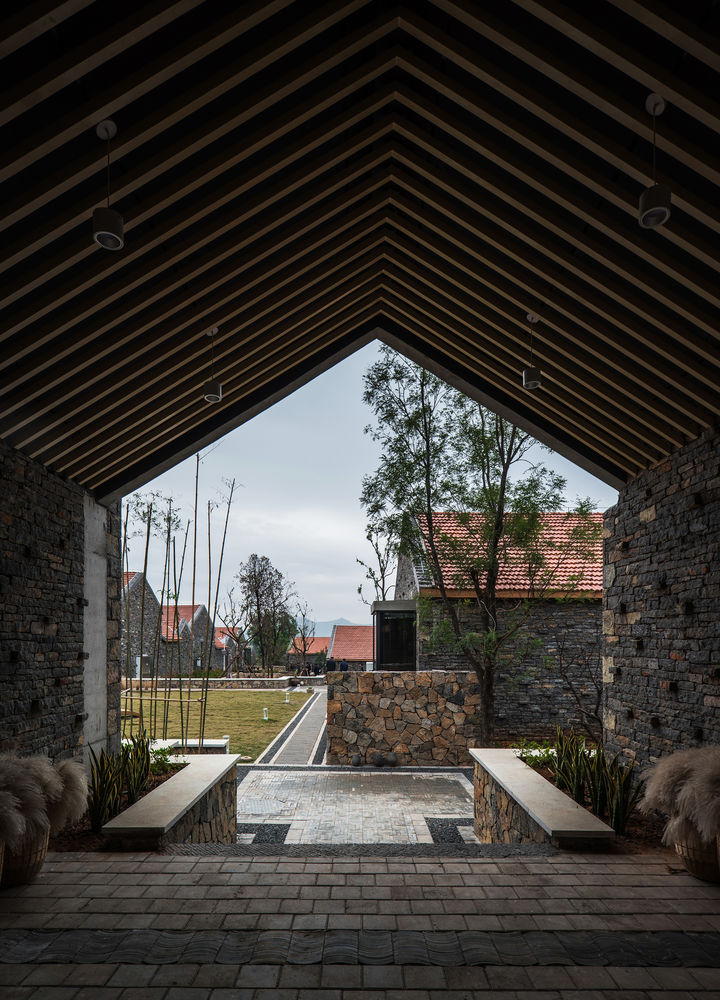
In-conclusionAs a whole village renewal practice project, Shiziling Ideal Village requires more in-depth consideration of the connotation and future of the village than single construction. In the context of Zhujialin’s rural complex, Shiziling Ideal Village cannot avoid the penetration of urban culture and non-traditional formats. Facing the strong impact of difference, the designer tried in practice to gradually integrate modern culture with traditional local characteristics from the perspective of planning and construction. In the renewal process of Shiziling Ideal Village, the design started with minimal intervention, transforming the typical local “yard” from being a prototype into a homestay, to gradually opening to form blocks, and then integrating the space into a public building, completing the traditional elements from preservation to the process of modern expression. For tourists, from the beginning of the village to the end, it is a complete experience that begins in a modern public service place, swims in a regional special space atmosphere, and finally lives in a traditional space form.
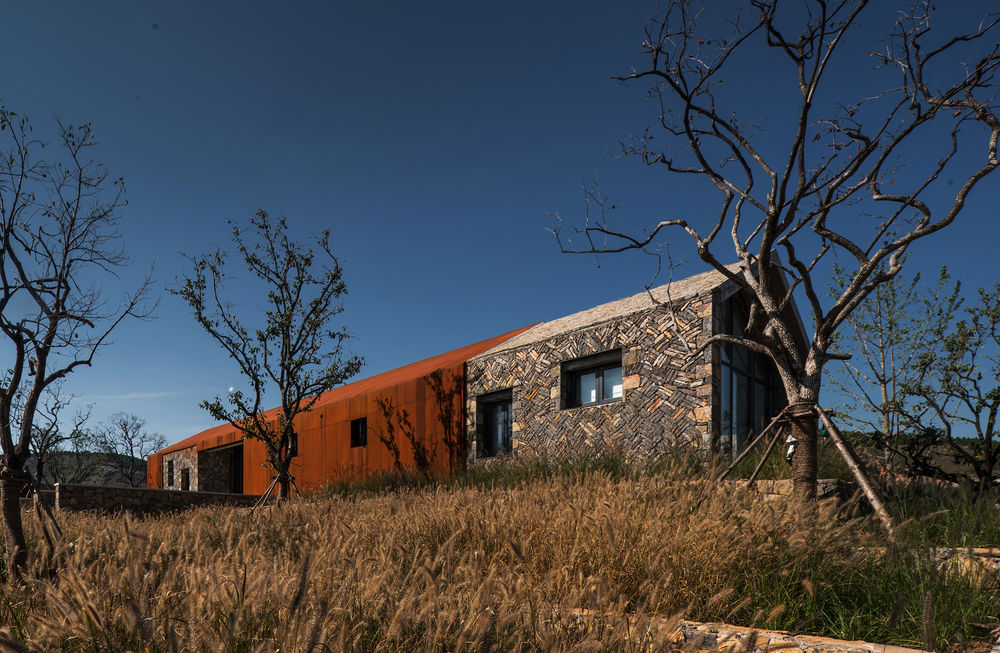
Project gallery
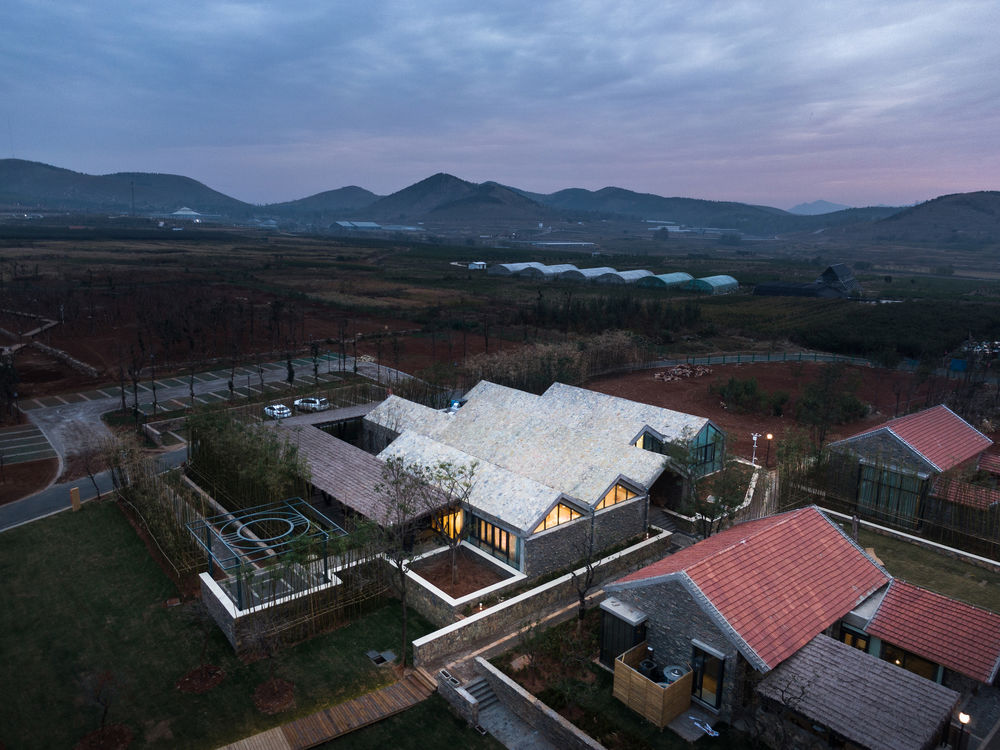
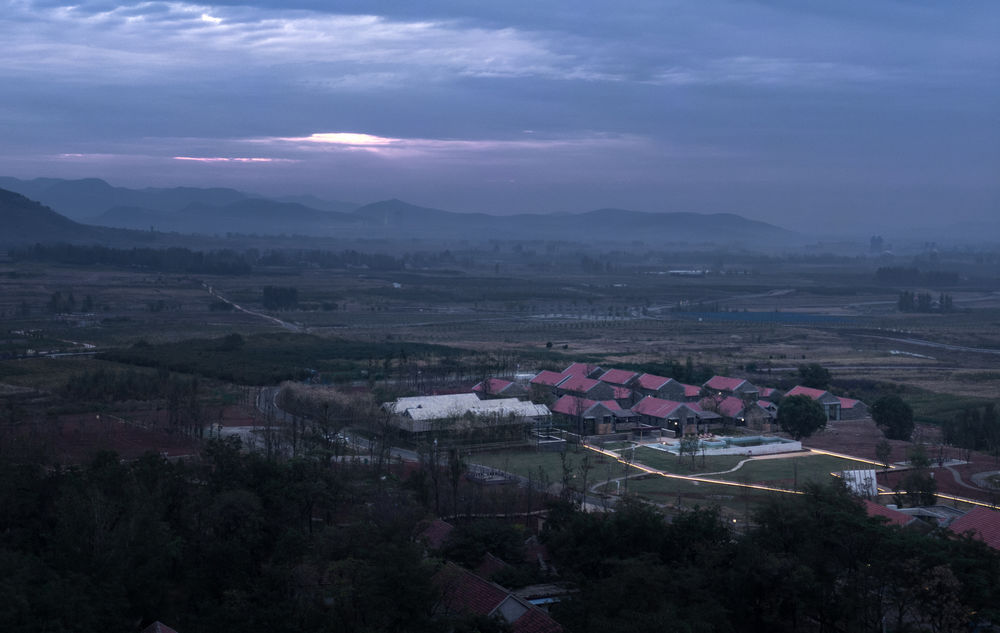
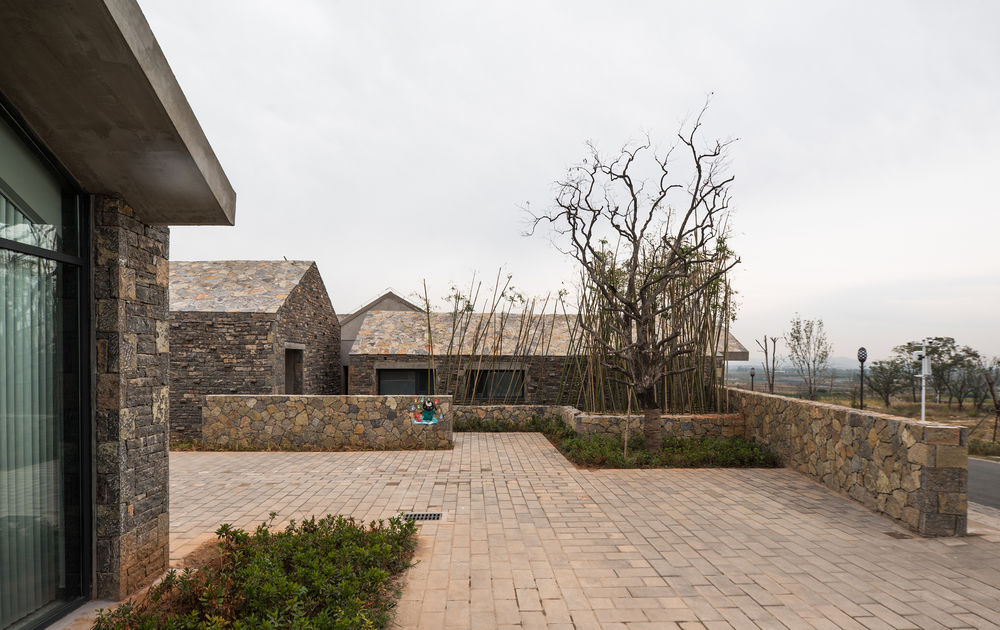

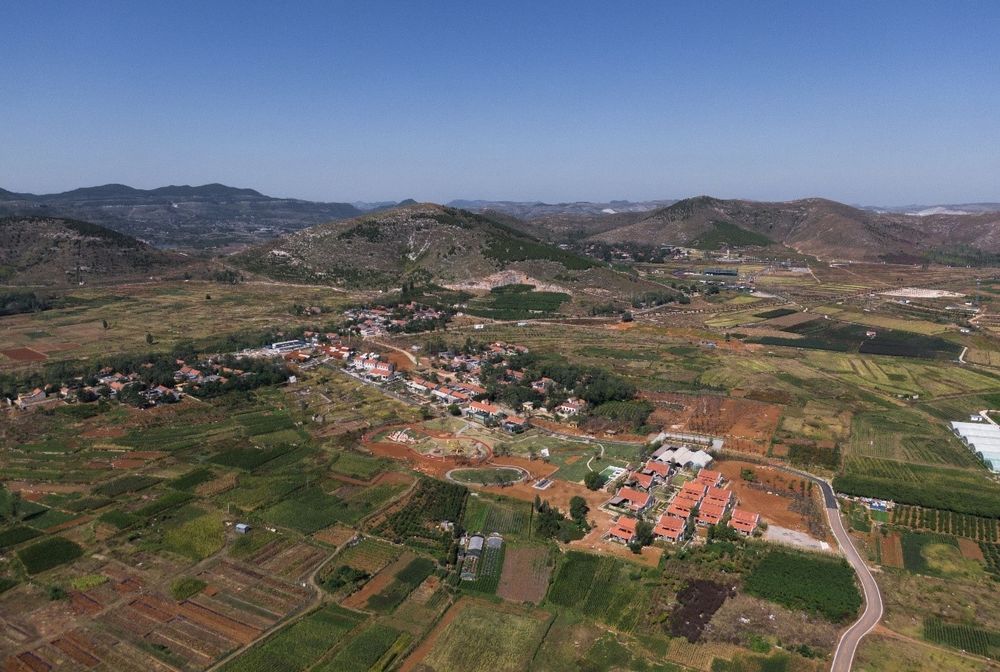
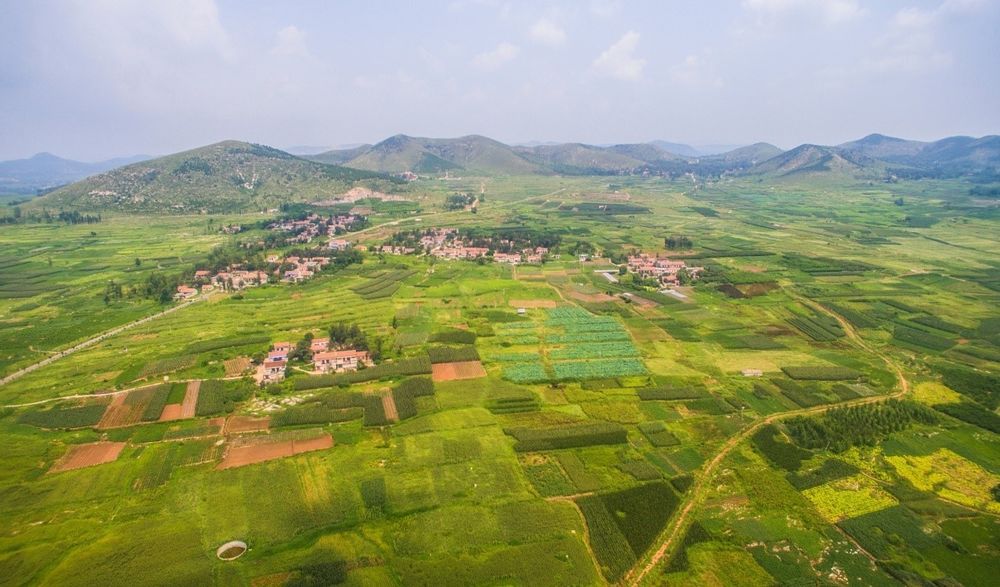
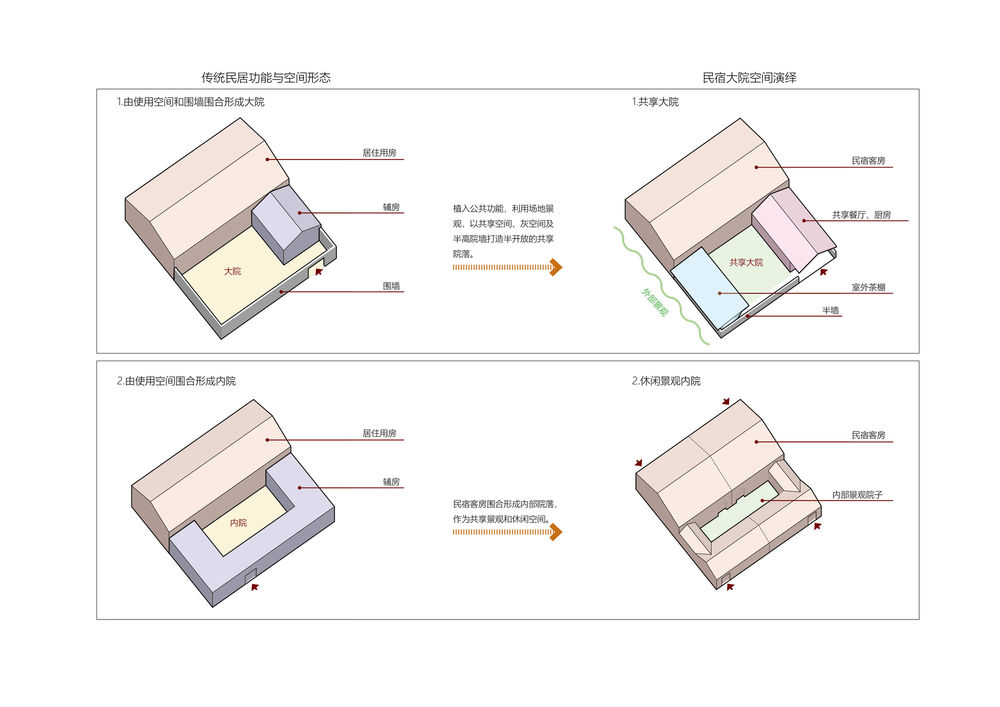
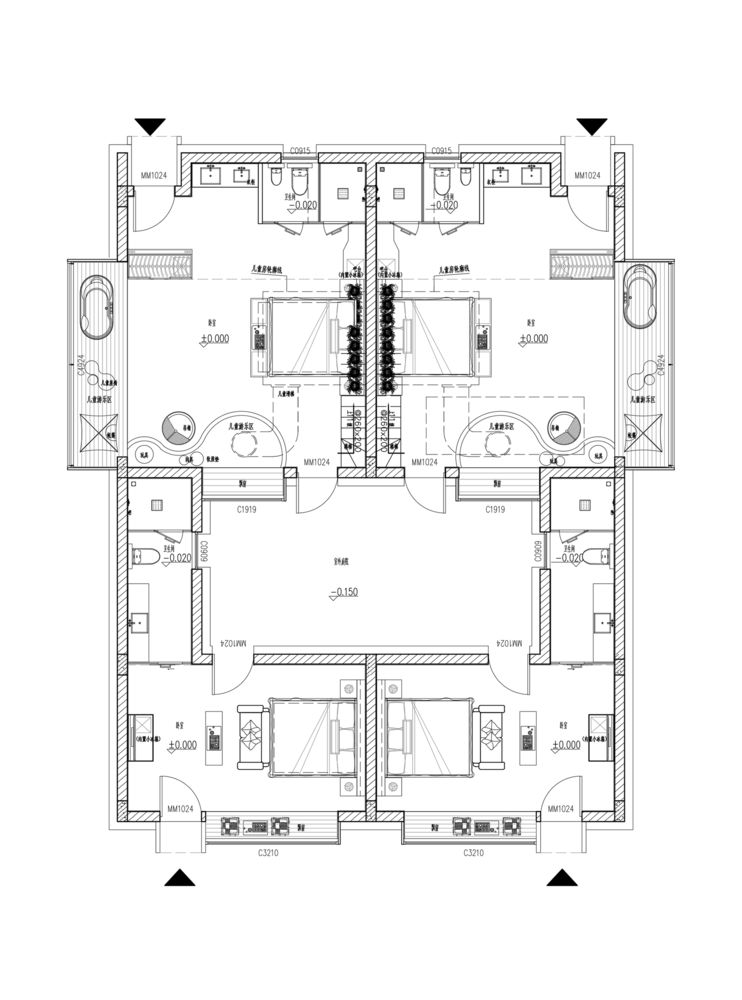
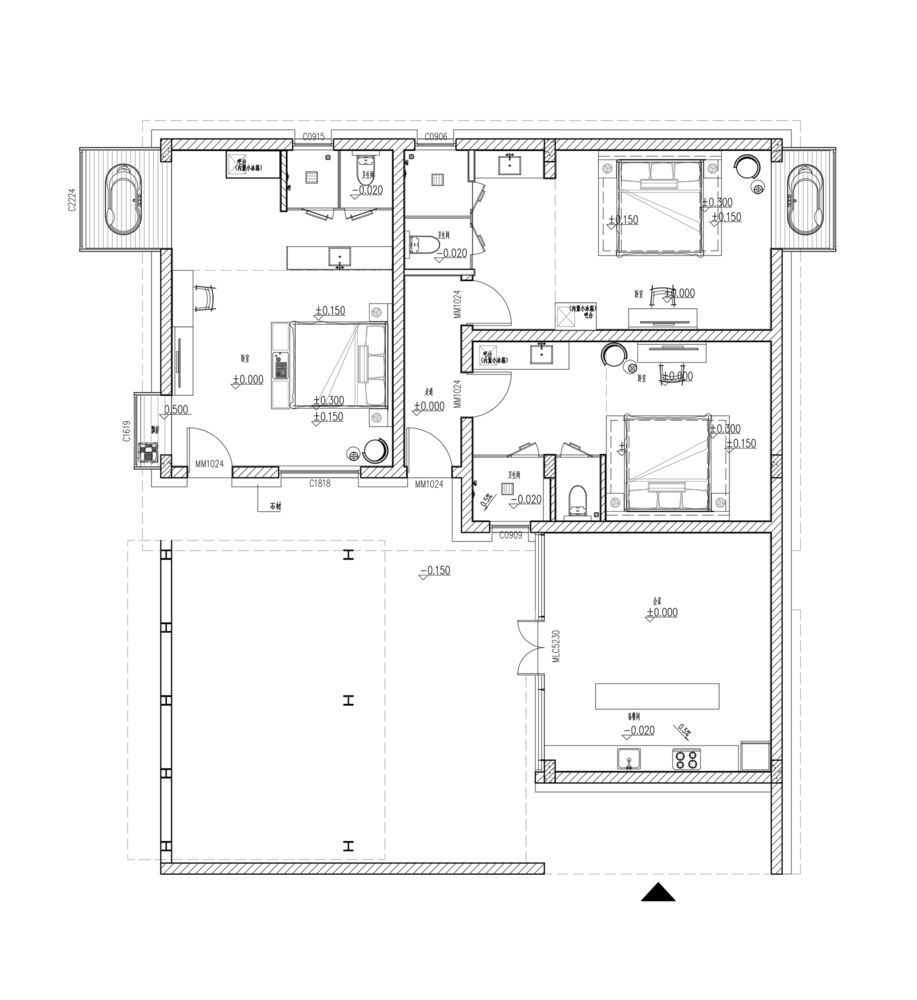
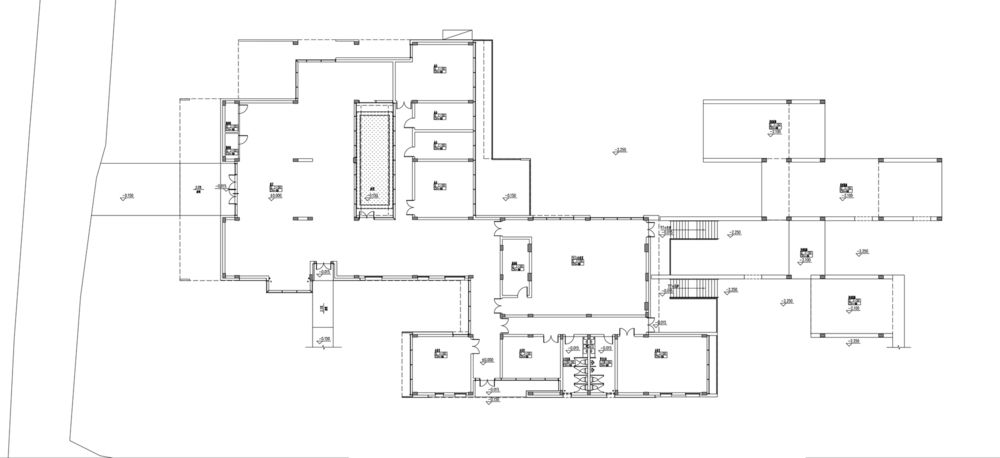

Project location
Address:Shiziling Village, Yinan County, Linyi, Shandong, China


